
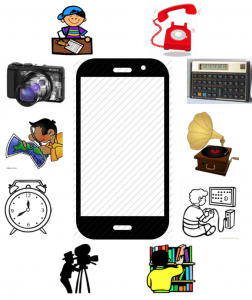
Smartphone
Objects Before Apps
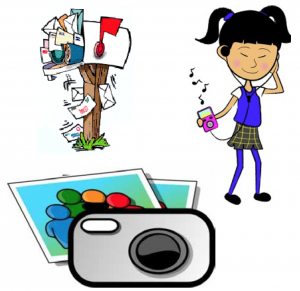 Before Smartphone Applications, there are separate objects. For easier translations for the international versions, present tense verbs are used throughout this book.
Before Smartphone Applications, there are separate objects. For easier translations for the international versions, present tense verbs are used throughout this book.
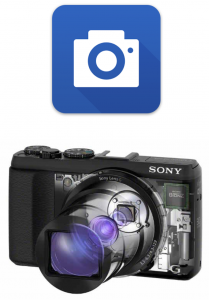
Camera
Before the Photo Apps, there are cameras.
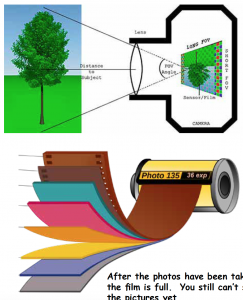 A camera lens focuses light onto film. The film can only take up to 36 pictures before more film is needed.
A camera lens focuses light onto film. The film can only take up to 36 pictures before more film is needed.
After the photos have been taken, the film is full. You still can’t see the pictures yet.
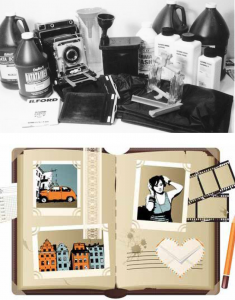 The film is taken to a special store. The pictures are developed onto photo paper. The photos are stored in albums.
The film is taken to a special store. The pictures are developed onto photo paper. The photos are stored in albums.
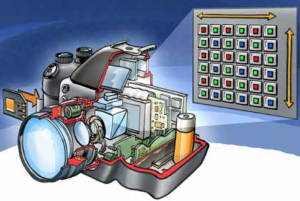 Next, digital cameras are invented. Lenses shine light onto special sensors instead of film. Sensors turn pictures into patterns of electricity that are saved as pictures.
Next, digital cameras are invented. Lenses shine light onto special sensors instead of film. Sensors turn pictures into patterns of electricity that are saved as pictures.
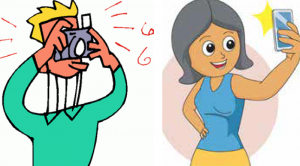 Today, we do not need a separate camera. We take pictures with Photo Apps on our smartphones.
Today, we do not need a separate camera. We take pictures with Photo Apps on our smartphones.
Smartphone cameras enable the selfie pictures.
There are even Photo Apps to remove red eyes and wrinkles from the digital pictures.
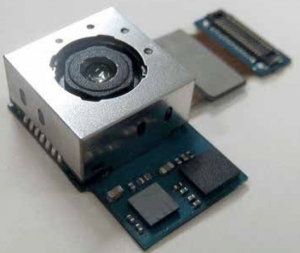
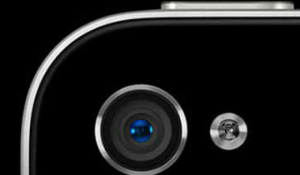
Inside the smartphone, tiny lenses focus light onto a sensor. Software turns the picture into digital patterns. Photos are stored in the phone’s memory.
Digital photos can be shared instantly with smartphones.
The challenge is storing and organizing so many online pictures.
Also, separate cameras still take the best quality pictures.
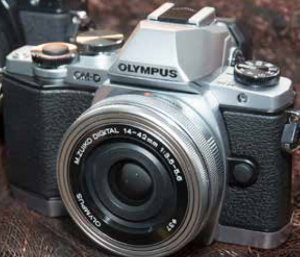
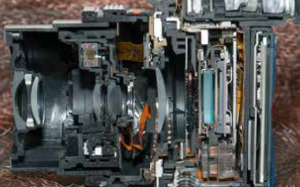
We need maps to help us find the places to take pictures of.
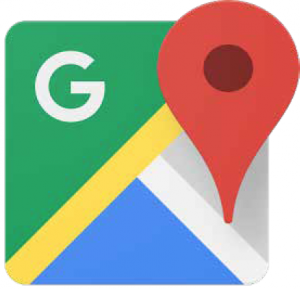
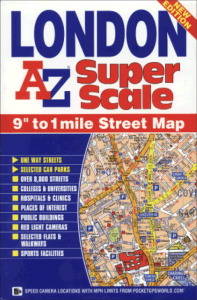
Printed Maps and Apps
Before smartphone Map Apps like Google Maps and Apple Maps, there are hard copies of printed maps.
The printed maps are only good for one place. That is, when we go to other places, we have to buy new maps.
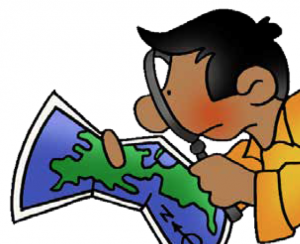
Today, we don’t need separate paper maps. We get our directions from Map Apps.
![]()
Map Apps even reroute us when we get lost.
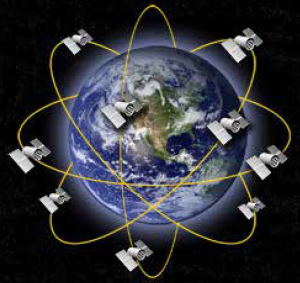 Today, Global Position Satellites, called GPS, send out signals to our Smartphones. The smartphone knows its location. Next, the phone talks with the maps database to plan our trips.
Today, Global Position Satellites, called GPS, send out signals to our Smartphones. The smartphone knows its location. Next, the phone talks with the maps database to plan our trips.
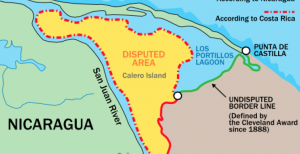 This is an interesting example of the power of online maps. At first, Google Maps made a mistake. It said that a piece of Costa Rica was part of Nicaragua. In 2010, the Nicaraguan Military seized the land. Later, they withdrew. Google has since corrected the online map error. It is amazing how well on-line maps do with helping us with directions
This is an interesting example of the power of online maps. At first, Google Maps made a mistake. It said that a piece of Costa Rica was part of Nicaragua. In 2010, the Nicaraguan Military seized the land. Later, they withdrew. Google has since corrected the online map error. It is amazing how well on-line maps do with helping us with directions
When we travel, we need to know what time it is.
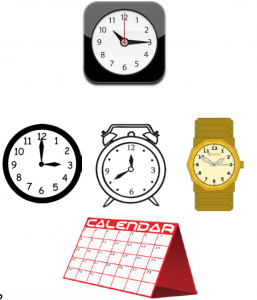 Clocks & Calendars
Clocks & Calendars
Before the Time Apps, there are separate clocks, alarm clocks, watches, and calendars.
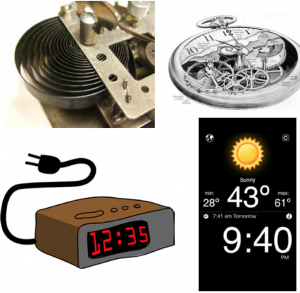 In the past, clock springs and gears turn hands to keep time. Bells ring to wake us up. Later, alarm clocks are electric. Today, smartphone sensors and software make clocks. They can even display time and weather at home around the world via the internet.
In the past, clock springs and gears turn hands to keep time. Bells ring to wake us up. Later, alarm clocks are electric. Today, smartphone sensors and software make clocks. They can even display time and weather at home around the world via the internet.
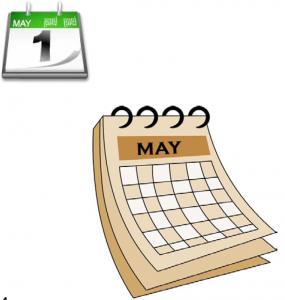 A calendar is a list of days, months and years. In the past, calendars are only printed on paper. On-line schedules and calendar apps are much easier to use.
A calendar is a list of days, months and years. In the past, calendars are only printed on paper. On-line schedules and calendar apps are much easier to use.
 Today, we don’t need separate clocks and calendars. Time Apps tell us the time and date and wake us up too.
Today, we don’t need separate clocks and calendars. Time Apps tell us the time and date and wake us up too.
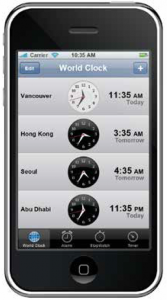
They also tell us the time in places around the world
Somehow with all this time at our fingertips, we are still late for meetings. Often, in meetings or shopping, we need to do math.
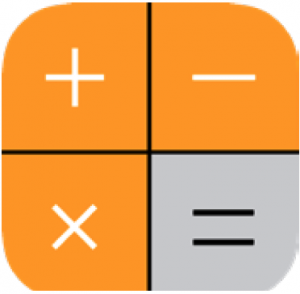
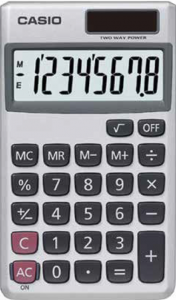
Calculator
Before the Math Apps, there are handheld calculators
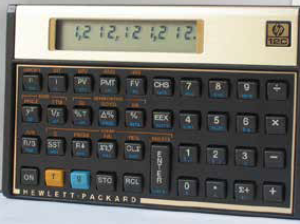
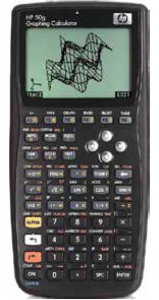
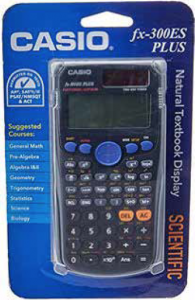
Different calculators do different tasks.
For example, there are separate calculators for accountants, engineers, and scientists.
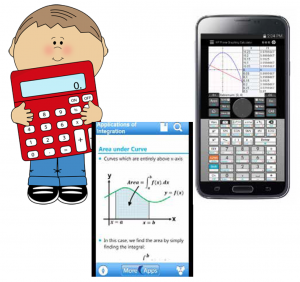 Today, we do not need separate calculators. Smartphones come with simple calculators. There are also additional Math Apps for higher math and more functions.
Today, we do not need separate calculators. Smartphones come with simple calculators. There are also additional Math Apps for higher math and more functions.
Math Apps help but the human still has to do the thinking. While we do math, we can listen to music.
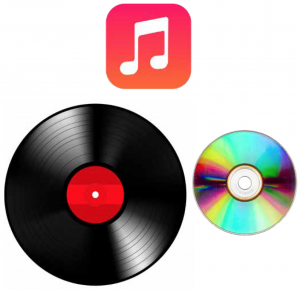 Music
Music
Before the Music Apps, there are round
LP records and later compact disks (CD).
Songs are stored as record grooves and CD micro peaks.
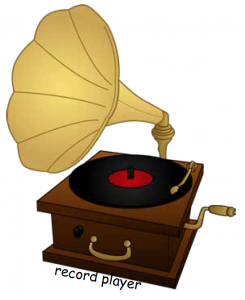
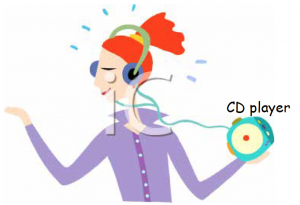
Records and CDs have their own separate players.
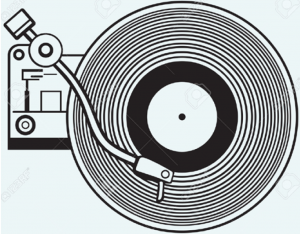 Groves on the LP record, wiggle needles. This shakes the speaker to make sounds.
Groves on the LP record, wiggle needles. This shakes the speaker to make sounds.
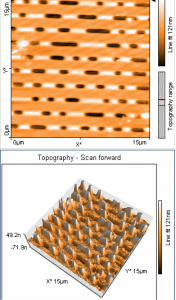 Under a microscope, you can see that CD’s have peaks and valleys called pits. The peaks bounce the laser light. The digital light patterns are changed into electricity in a sensor and then into sound in the speaker.
Under a microscope, you can see that CD’s have peaks and valleys called pits. The peaks bounce the laser light. The digital light patterns are changed into electricity in a sensor and then into sound in the speaker.
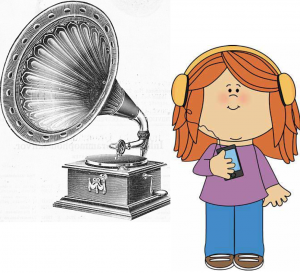 Records and CDs can only play a few songs. It is amazing that Music Apps can play thousands of songs.
Records and CDs can only play a few songs. It is amazing that Music Apps can play thousands of songs.Listening is nice but we to want to hear and see videos.
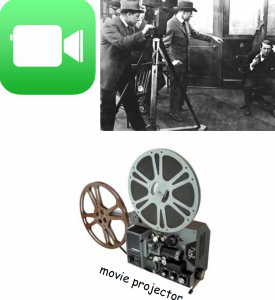 Video
VideoBefore the Video Apps, there are movie cameras and projectors.
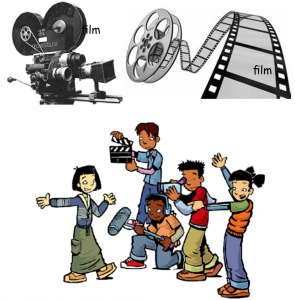 To record action, movie cameras take over 20 pictures a second. The first movie cameras use film. Next, video cameras record onto magnetic tape.
To record action, movie cameras take over 20 pictures a second. The first movie cameras use film. Next, video cameras record onto magnetic tape.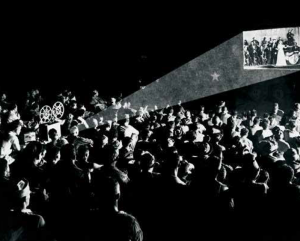 At a theater, movie projectors use bright lights to shine through the film. The movie is shown onto a huge screen. Popcorn, candy and snacks are expensive.
At a theater, movie projectors use bright lights to shine through the film. The movie is shown onto a huge screen. Popcorn, candy and snacks are expensive. 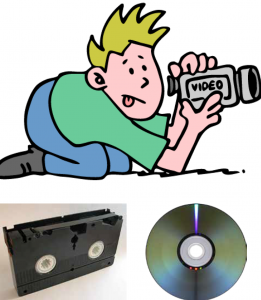 Later, videos are stored on VHS tapes and then next onto DVD’s.
Later, videos are stored on VHS tapes and then next onto DVD’s.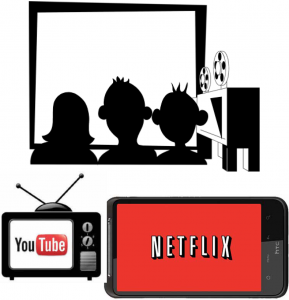 It is amazing that movies have gone from theaters to personal TVs and smartphones.
It is amazing that movies have gone from theaters to personal TVs and smartphones.More than just watching videos, people want to play games.
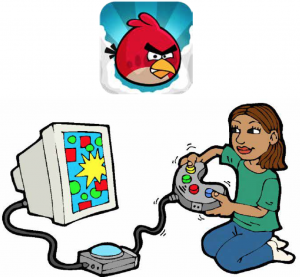 Video Games
Video GamesBefore the Game Apps, there are arcades and then home TV consoles and controls.
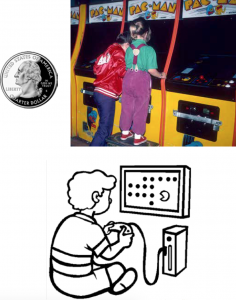 In 1980’s, video games are played by paying quarter coins into machines at arcades. Next, video gaming systems hook-up to the home TV.
In 1980’s, video games are played by paying quarter coins into machines at arcades. Next, video gaming systems hook-up to the home TV.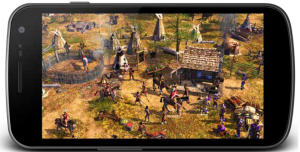 Nowadays, downloaded software Game Apps and smartphone sensors explode the use of video games.
Nowadays, downloaded software Game Apps and smartphone sensors explode the use of video games.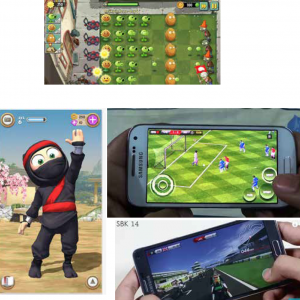 Zombies, ninjas, fighters, soldiers, adventurers, racers, sports players are all examples of video games available on smartphones.
Zombies, ninjas, fighters, soldiers, adventurers, racers, sports players are all examples of video games available on smartphones.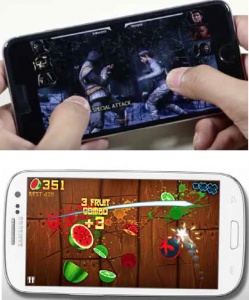 The ease of access to games on smartphones contributes to concern about video game addiction.
The ease of access to games on smartphones contributes to concern about video game addiction.Video games also connect players via the Internet. Often, we just want to send short notes to someone.
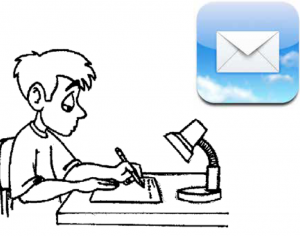 Text and e-mail
Text and e-mail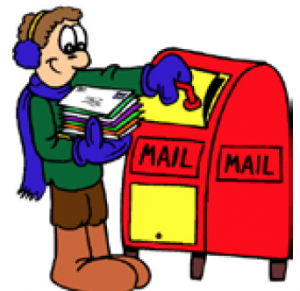
Before Text and e-Mail Apps, people write letters by hand with pen and paper.
It costs money to mail the letters. Hand mailed letters are called snail-mail because they take days to deliver.
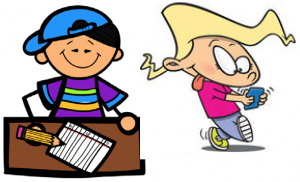 It is amazing to go from hand written letters to on-line texts and e-mails.
It is amazing to go from hand written letters to on-line texts and e-mails.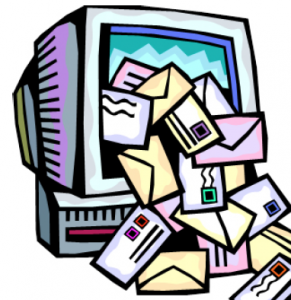 But, just like snail-mail, e-mail gets lots of junk mails and adverts.
But, just like snail-mail, e-mail gets lots of junk mails and adverts.Today, we text and e-mail instantly with others around the world. The challenge is that sometimes, we hit the send button before thinking through what we are saying – oops! There is no “un-do” for on-line e-mail.
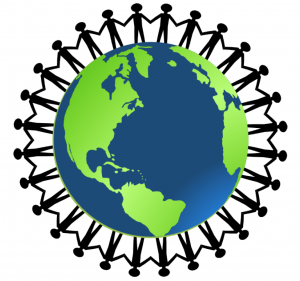
Sometimes, we search the Internet for something interesting to share in our e-mails.
Internet Searches
Before Internet searches, people with access, research at libraries.
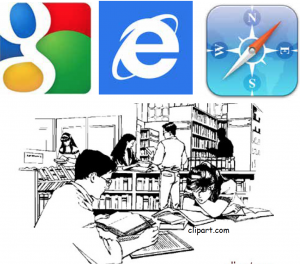
Books are stored on shelves at public libraries.
Library searches include looking up topics in special books called encyclopedias.

Drawers of catalog cards are searched by hand to find books on subjects of interest.
The books are stored on rows after rows of shelves. Each book has a special number called Dewey Decimal code to help us find the right book. There is a lot of running around to get all the books we need.
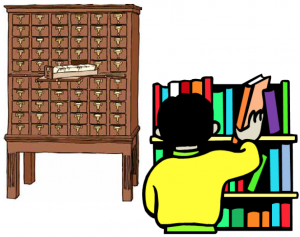
In the past, there are several attempts to store the world’s data. Only a few people can access this data.
Today, the world-wide-web links humanities knowledge. Free access connects humans and kindles the hopeful quest for world peace.
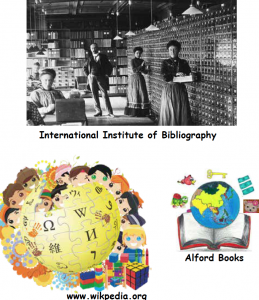
It is amazing to go from limited shelves of library books to hand-held on-line Internet searches.
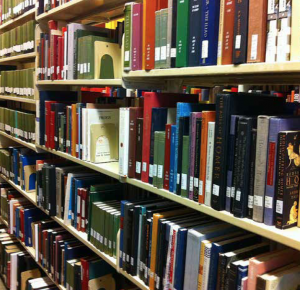
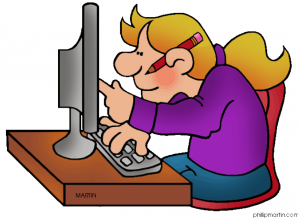 Today, we have a world of information at our finger tips. We just have to show interest, ask questions and search the internet. With access to so much information, it is easy to get overwhelmed by the mountains of data.
Today, we have a world of information at our finger tips. We just have to show interest, ask questions and search the internet. With access to so much information, it is easy to get overwhelmed by the mountains of data.The challenge is to stay focused on one basic question at a time. Summarize the answer without drowning in the sea of on-line data. Often, we are over-entertained at the expense of being informed.
Sometimes, we just want to call someone.
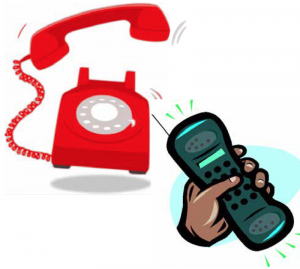 Cell Phone
Cell PhoneBefore cell phones, there are telephones that are locked in place with land-lines.
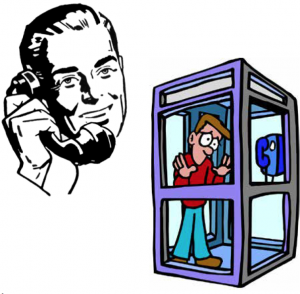 Back then, home and work have land-line phones. When you want to make a call at places in between, you have to find a pay phone. Many people today cannot remember a time before cell phones. They cannot image the amount of inconvenience by not having a portable cell phone.
Back then, home and work have land-line phones. When you want to make a call at places in between, you have to find a pay phone. Many people today cannot remember a time before cell phones. They cannot image the amount of inconvenience by not having a portable cell phone.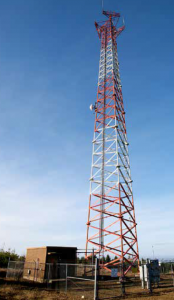 Everywhere we use our cell phones, there are towers and base stations. Cell phones use radio waves to talk with tower antennas. The base stations connect to land-lines.
Everywhere we use our cell phones, there are towers and base stations. Cell phones use radio waves to talk with tower antennas. The base stations connect to land-lines.Global tower stations and telephone lines connect cell phones.
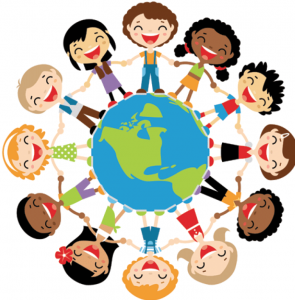 All this happens so fast that we can talk with others around the world without delay.
All this happens so fast that we can talk with others around the world without delay.Wow! Today, smartphones sure can do a lot!
In the past, these are all separate objects.

Smartphones replace all these objects with software apps and sensors.
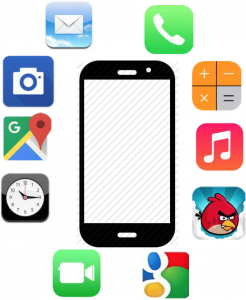
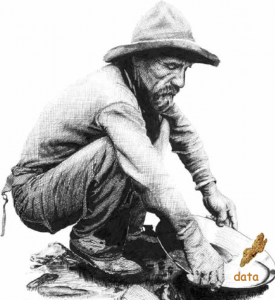 Long ago, people searched for a magic stone that would change anything into gold. Today, smartphones “magically” change separate objects into Apps. Data is the new gold rush!
Long ago, people searched for a magic stone that would change anything into gold. Today, smartphones “magically” change separate objects into Apps. Data is the new gold rush!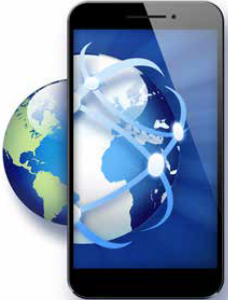 Conclusion
ConclusionSmartphones offer us a world of golden opportunities to realize our own creativity with on-line tools and global connectivity.
 Special thanks to Douglas J. Alford for providing us this wonderful book.
Special thanks to Douglas J. Alford for providing us this wonderful book.
Buy this book on Amazon
See other books by Mr. Alford
Click here to see Mr. Alford’s website




















